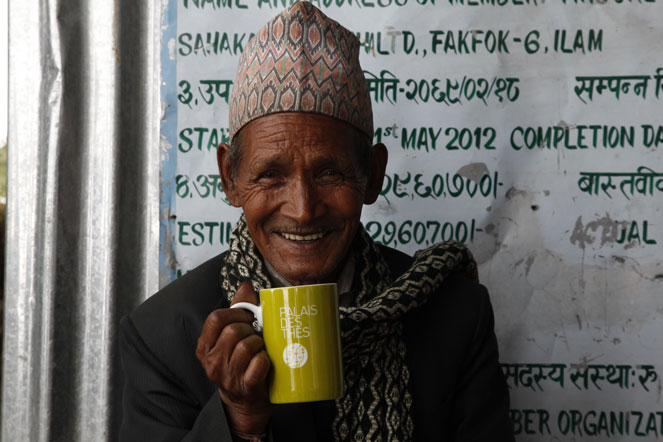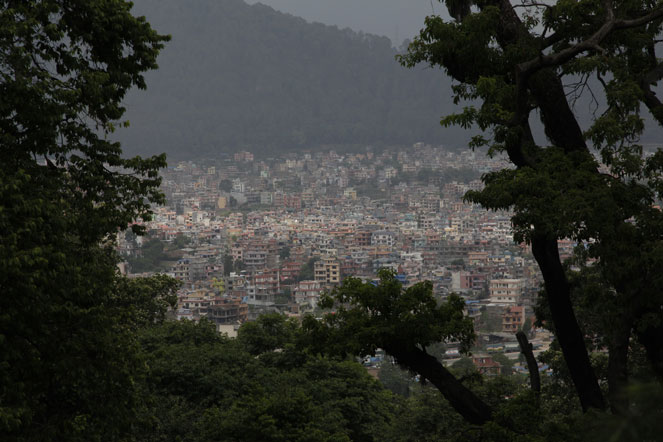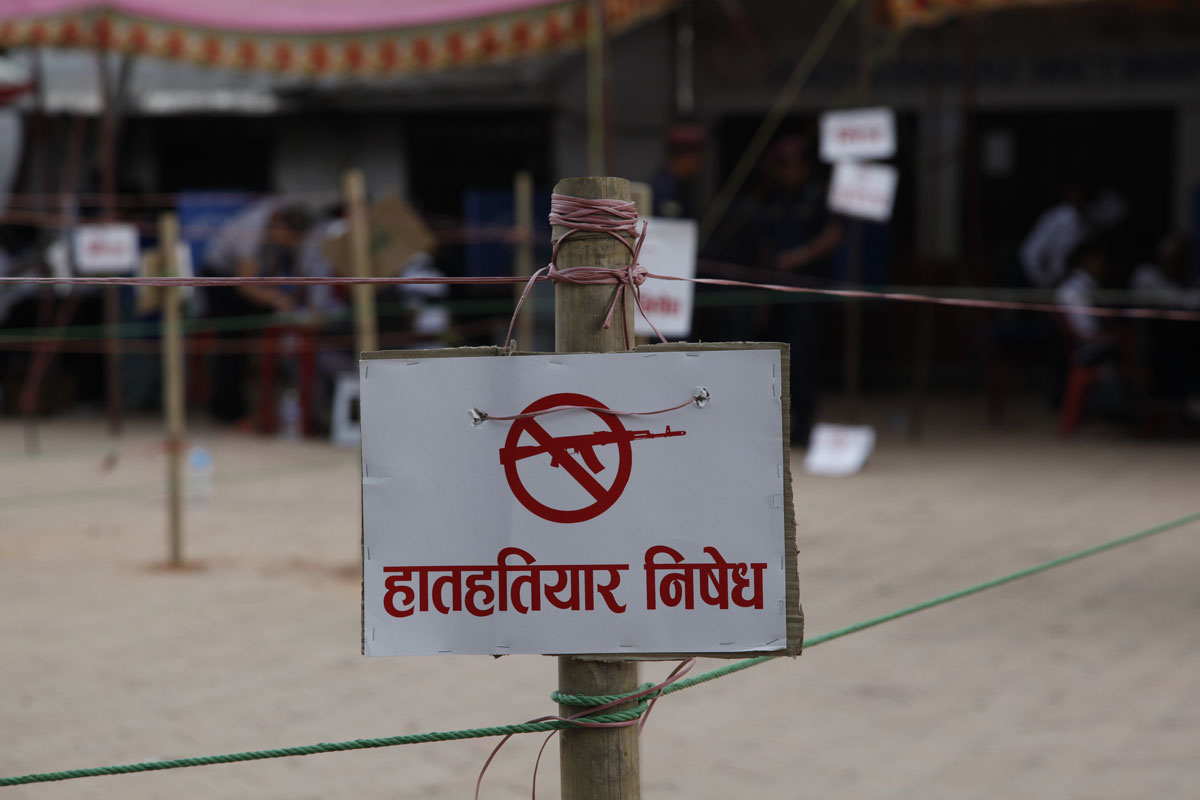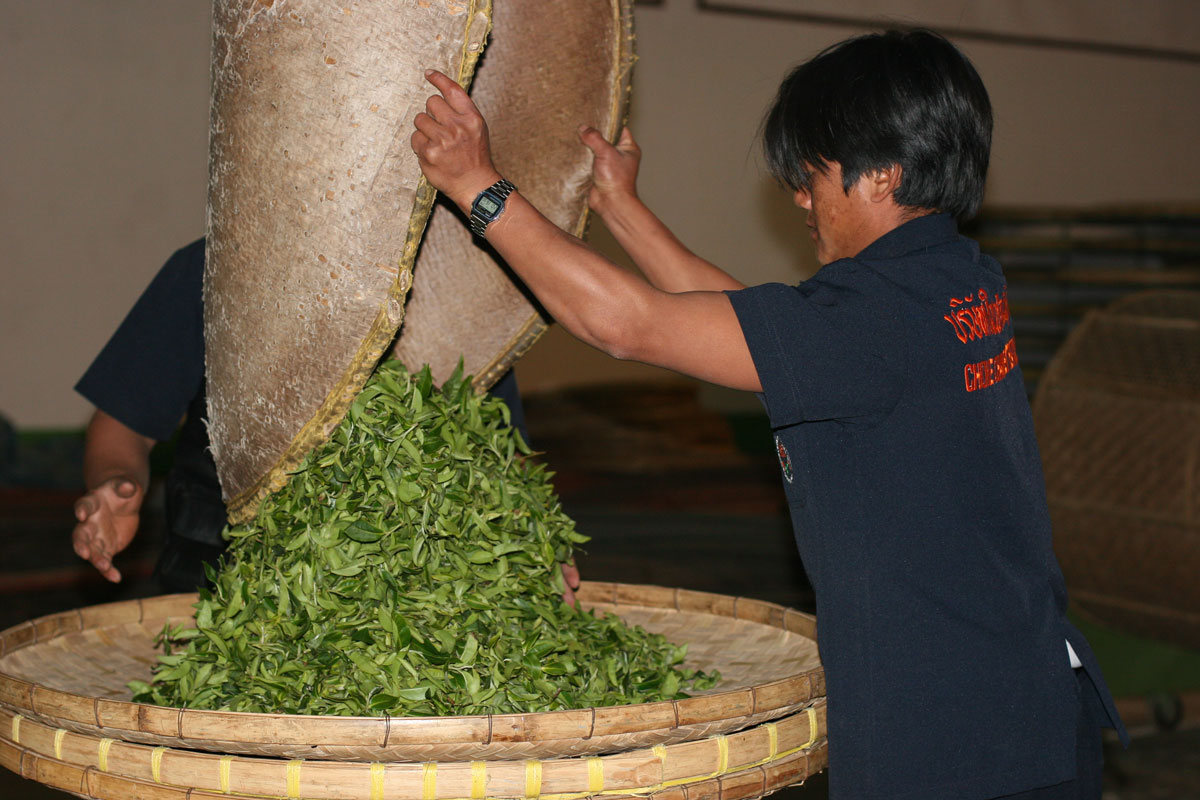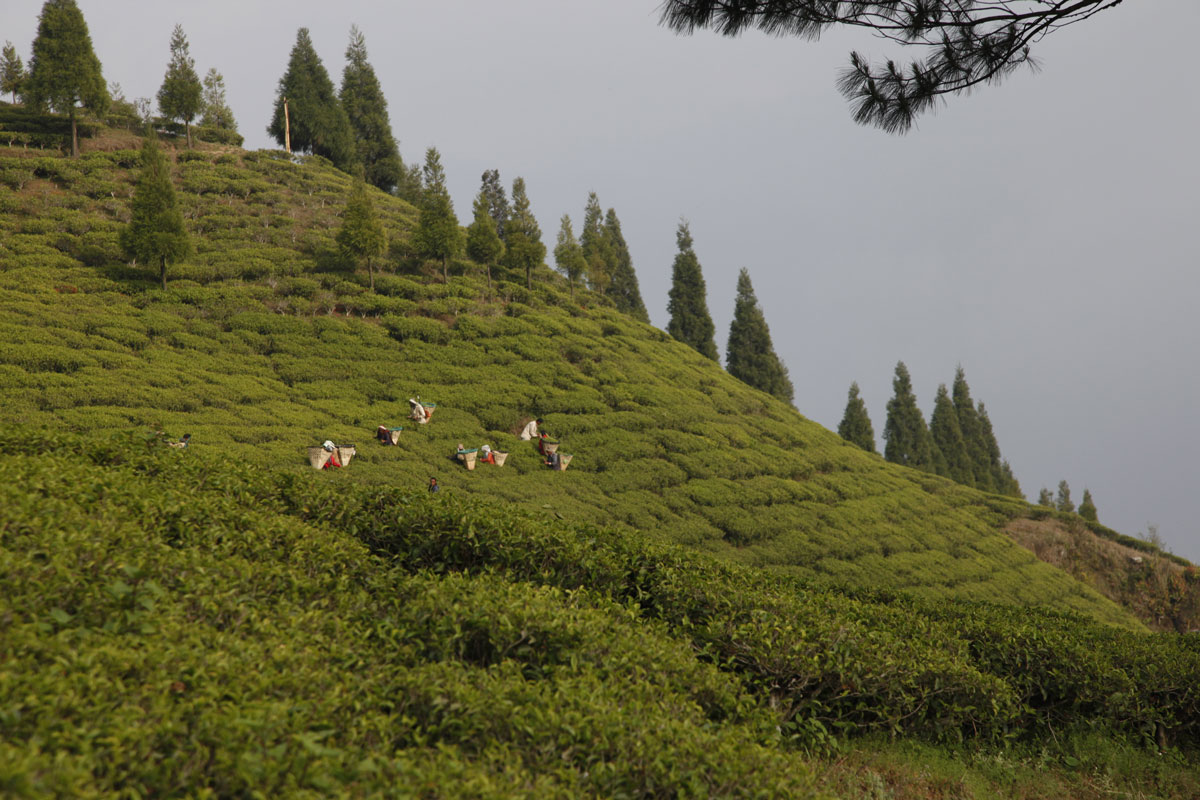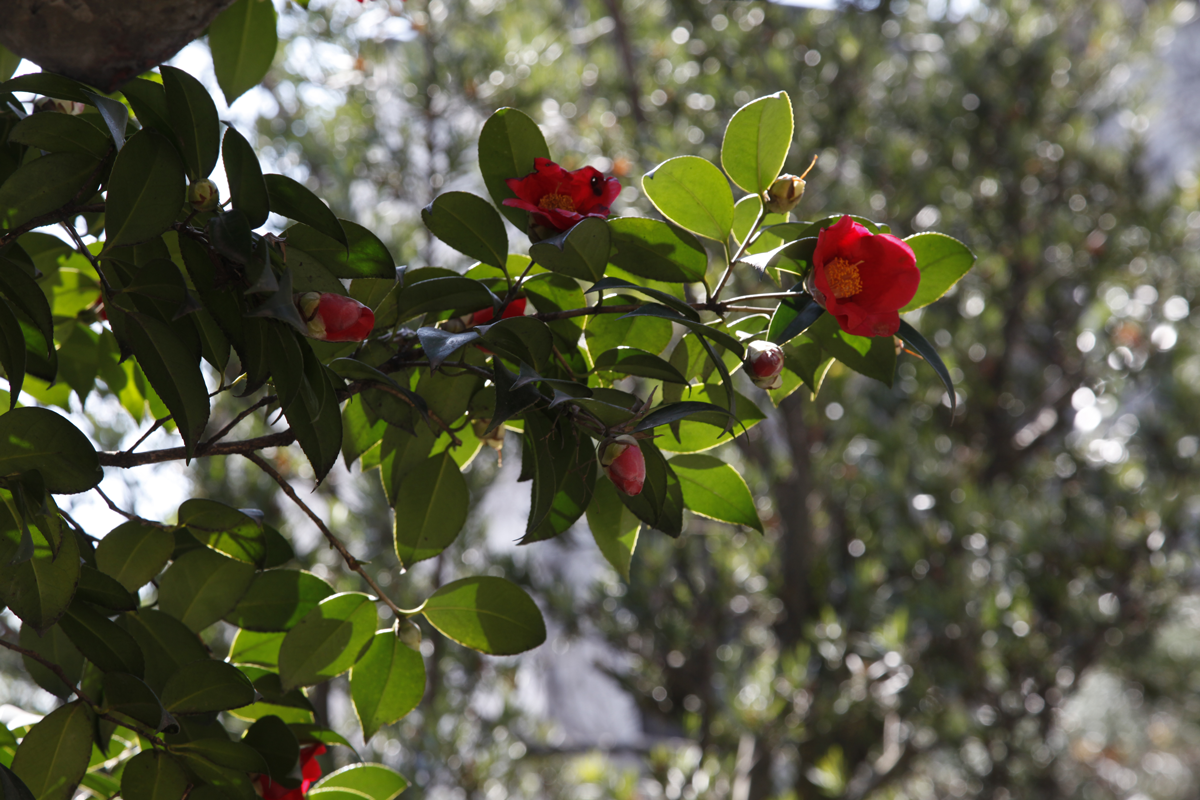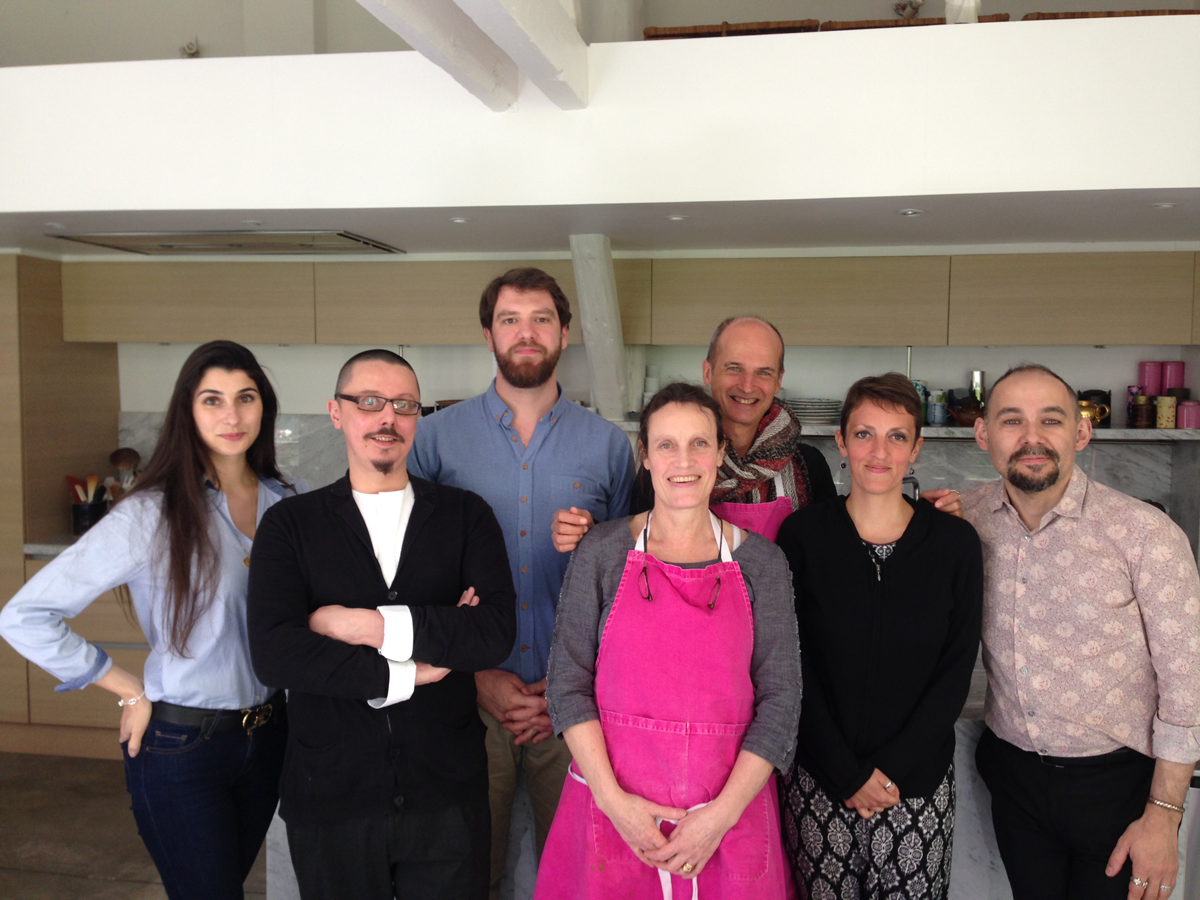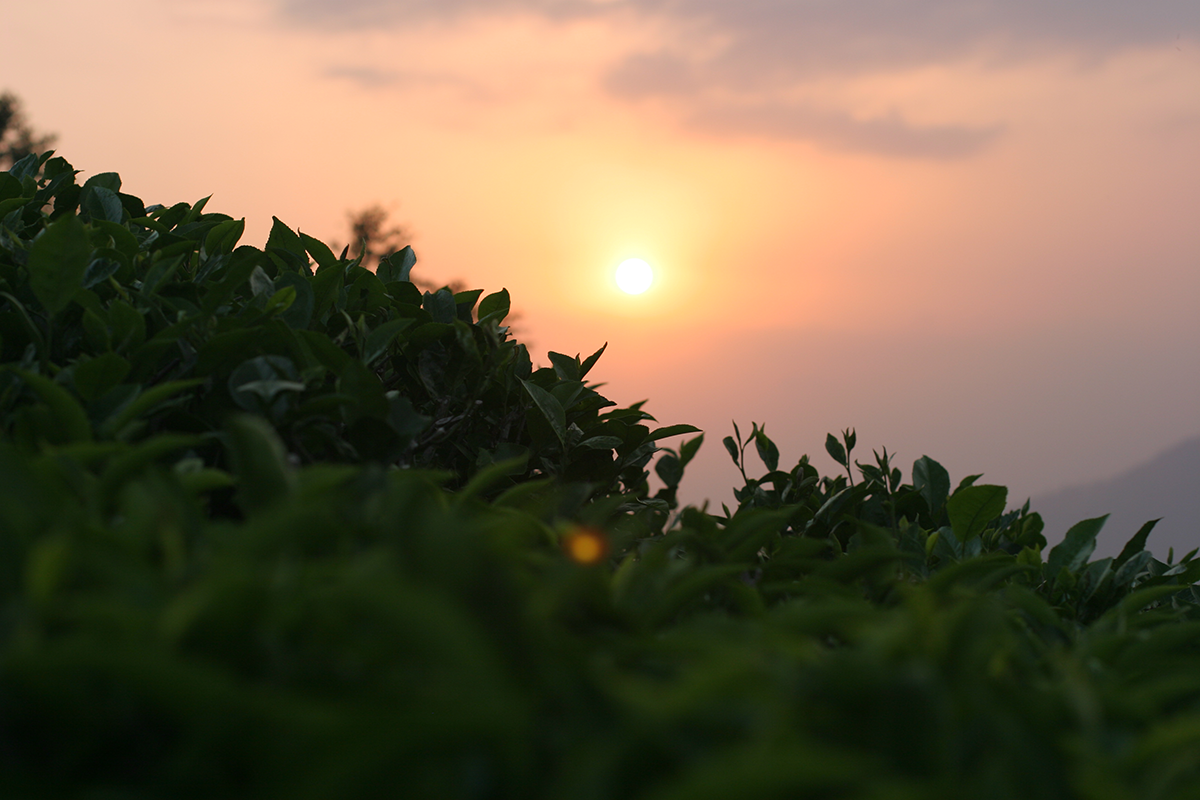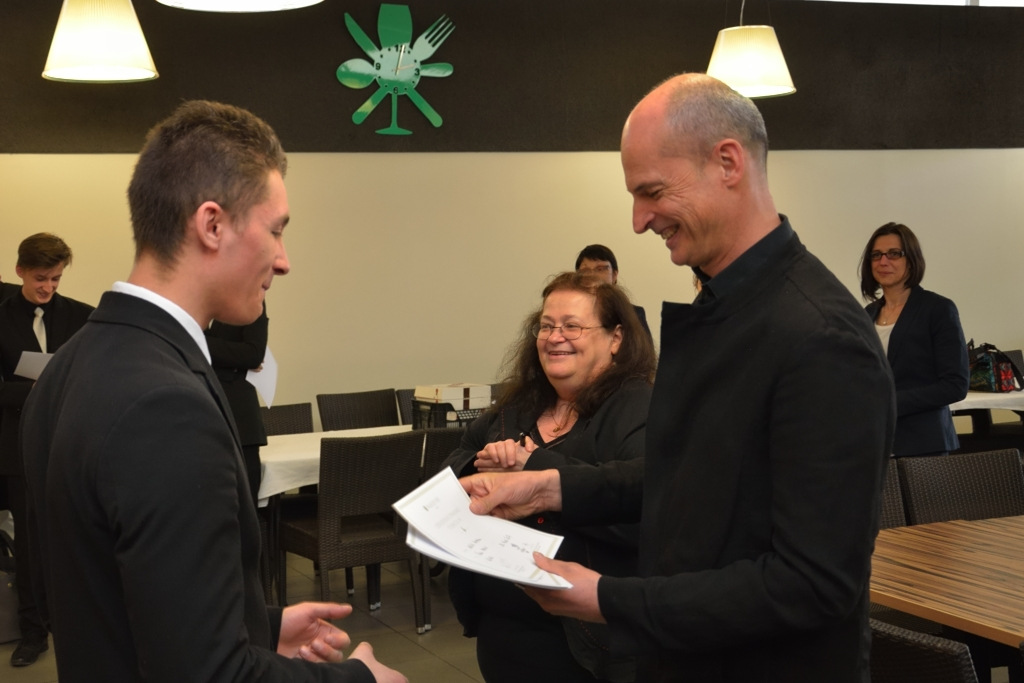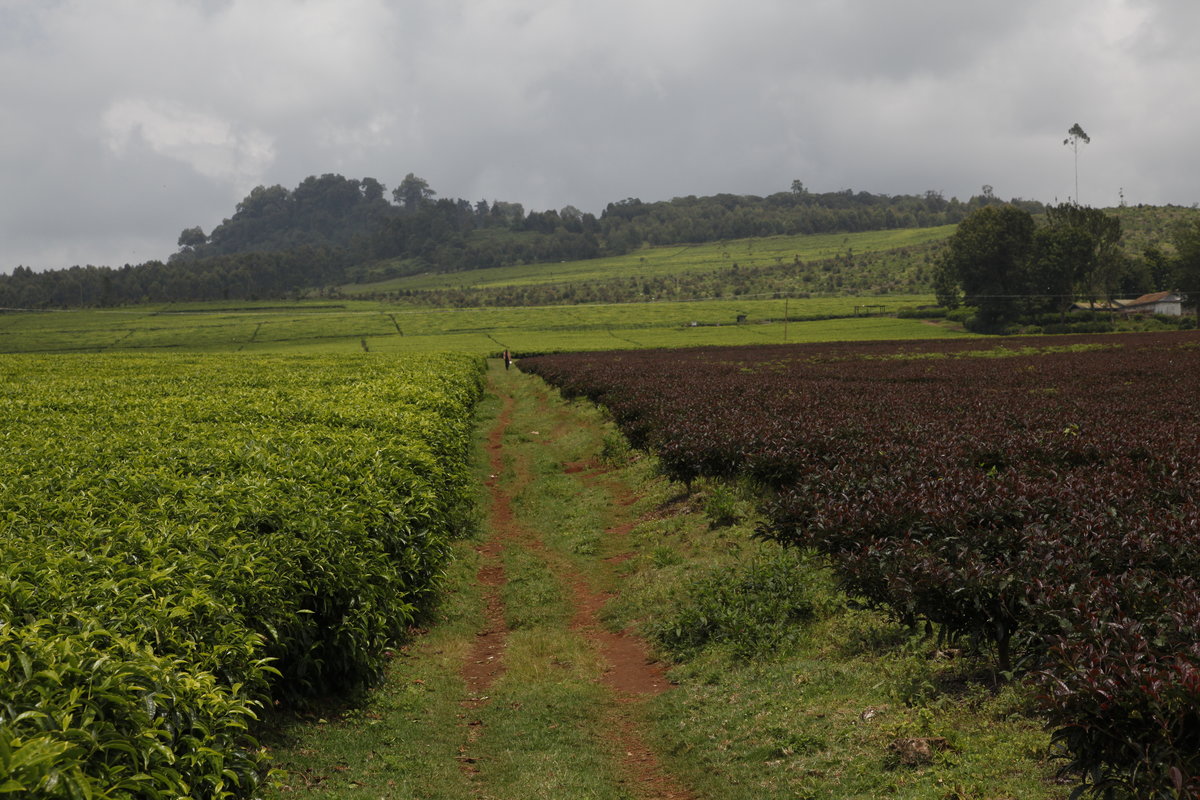I met Rana Bahadurdiyali a few days ago in Ilam valley, in Nepal. Twenty-four years ago, Rana founded the co-operative Teenjure, which today has no less than 234 farmers who combine their tea production. This year, Teenjure has started to produce some very good, interesting and varied teas. When I asked Rana what he wanted me to write about him, he told me how hard everyone had worked, how challenging it was for the whole community of Teenjure to start growing tea – clearing the land, planting the tea plants, building the factory and installing the equipment. Twenty-four years ago, when they began this project, they had no water, no road, no electricity. It took them two years to build the factory, Rana, aged 82, tells me, smiling.
ARCHIVE FOR 2017
There’s a nirvana for everyone
I’m writing from the Nirvana Garden Hotel in Kathmandu. In Buddhist culture, “nirvana” means a state of bliss. I find it in the country’s mountains when I drink sublime teas in a protected landscape, often made up of jungle and neat rows of tea plants. The harmony between the experience of tasting and the contemplation of nature fills me with happiness. Tomorrow, I’m leaving for the Ilam valley in the east of the country, to visit farmers I already know, and meet some new ones.
In Nepal, special measures are put in place on election days
This Sunday, people were voting in Kathmandu. Here, on election days, to ensure the process is peaceful and democratic, all car traffic is banned and the sale of alcohol is suspended. Also, around the polling stations, there are signs reminding you that it is strictly forbidden to carry a gun in the vicinity.
Teas steeped in history, in northern Thailand
A few weeks ago I came across a Jade Oolong from Thailand which I loved. It gives me the opportunity to tell you a bit about the village of Mae Salong in northern Thailand, and about its Chinese population and its unique and troubled history. During the 1950s, routed out by Mao Zedong, the nationalists of Kuomintang retreated to the island of Taiwan, apart from a few regiments based in Yunnan, who chose to organise their resistance from Burma (now Myanmar), aided by the CIA. Ten years later, tired of this threat on its border, China got Burma to chase out these regiments. Some soldiers decided to base themselves in Taiwan, others in Laos, and some in Mae Salong, just on the other side of the border, between Burma and Thailand. In the 1980s, Mae Salong’s Chinese people gave up the idea of returning to China one day, and following the eradication of poppy farming, switched to growing tea. Having brought their methods and expertise from Taiwan, as well the young plants, this is why we now find in the mountains of the Golden Triangle these delicious Oolongs, which have similarities with some Taiwanese Oolongs.
A great name does not always make great tea
In Darjeeling and Nepal, you cannot trust the name of a garden blindly. Of course, plantations such as Turzum, Singbulli, Puttabong, Thurbo, Margaret’s Hope and Castleton have a much higher reputation than others. The same goes for Guranse and Shangri La in Nepal. But it is essential to understand that even the most prestigious gardens cannot produce high-quality teas all the time. At some point in the year they end up selling pretty nondescript ones. During the rainy season, for example, even an experienced planter cannot produce good tea, because the leaves grow too quickly and have no time to develop their essential oils. Also, each plantation has plots that are more or less well oriented, and planted with different cultivars. On Monday you might produce a sublime tea using leaves harvested from an excellent plot, and on Tuesday produce a very ordinary tea from a different part of the plantation. To sum up: yes, some gardens can make remarkable teas, but watch out, as they also produce mediocre ones. So you have to be very selective, and taste a vast amount of tea, to be able to recognise the best.
There’s a spring tea for everyone
For those who want to try spring – or first-flush – teas, here are some tips. Darjeelings harvested in March and April develop sustained floral notes accompanied by a touch of astringency and bitterness. For a combination of brioche and floral aromas, try Nepalese first-flush teas, which are harvested from the start of April. Those who enjoy chestnut, mineral and vegetal notes would do well with new-season Chinese teas. (The rarest and most sought after, and therefore the most expensive, are those known as pre-Qingming teas, harvested before Chinese Tomb-Sweeping Day which takes place at the beginning of April). Lastly, for fans of iodine, cut grass and steamed vegetable notes, Japanese Ichibanchas are a pure delight. They are harvested between the end of April and the middle of May. Of course I haven’t covered them all here, and there are other countries to discover, but if we are talking about springtime and nature reawakening, and you want teas that evoke gardens and rising sap, these are the ones I think of first.
Tea Sommeliers day
Working together is good; sharing good times is even better. Yesterday was the Tea Sommeliers day, which I devote to the people who have obtained their precious diploma. The aim of the day is to spend a good time together, with tea, food and treats for the senses.
We began by tasting the entire selection of first-flush Darjeelings, which I have just completed, before joining Nathaly from L’Esprit-Cuisine for a meal of food and tea pairings. With Nathaly – a remarkable, positive and passionate teacher – we prepared an onglet of Aubrac beef with crème à l’anguille, flavoured with Bourgeons de Yunnan Premium tea. It was delicious, and we ate it accompanied by the same tea. This followed a fresh herb soup served with a Taiwan Si Ji Chun, and was followed by a delicious streusel, chocolate and black sesame biscuit served with the famous Jukro from South Korea.
In the afternoon we returned to the tasting room, where our tea sommeliers discovered a few rare teas, tasted blind of course, before we all decided together whether they merited being called “premium” teas. Among the curiosities we tasted were a goishicha from Japan, a compressed dark tea from Hunan, little tea balls from Sri Lanka, a tea from the Nainital region of India, and a black tea from Colombia!
How we choose our first-flush Darjeelings
First-flush Darjeelings are the most difficult teas to buy, because production is not organised like it is elsewhere. In Darjeeling, they pick leaves from the same plants every seven to 10 days, and as plantations are divided into around 10 plots, it means they are constantly harvesting. As soon as the leaves are picked, they are processed; this batch is then sold as one lot. This means that each of the region’s 80 plantations produce a tea every day, and those are just the whole-leaf teas – the best, of course. These plantations do not mix the leaves from one day with those from the next day. The result is that six times a week for around six weeks, each of the 87 plantations puts a tea up for sale. This totals around 3,000 different batches of first-flush – or spring – Darjeelings to taste. Quality can vary considerably from one batch to another. Even when they come from the same plantation, one tea can be a hundred times better than another, if you want to quantify those differences.
Of course you cannot rely wholly on the name of a garden, or on a variety; that would be too simple. Only blind tasting allows you to judge a tea’s quality. This must be done quickly, very quickly, because although there are not many of us who receive these samples (only around 30 buyers in the world), sometimes a very good tea can sell just 30 minutes after the few grams of the sample have been received. So you need to work quickly while remaining calm and focused. But these teas that come from the roof of the world are generally worth the effort. They are the first teas of the season. They have a lovely spring freshness and incomparable floral, zesty aromas.
Tomorrow’s experts
If we want staff working in hotels and restaurants to offer quality teas in the future, we need to train young people who are starting out in their careers. Reims Academy and Palais des Thés have joined forces to develop a certification course in “tea knowledge and service”. First, we trained tutors in several hospitality colleges, who then educated their students. Last week, in Reims, it was time for the exams and awarding of certificates. Congratulations to all of the students who passed. I hope it encourages them to continue to find out more about tea, and make their future customers happy.
A tea rich in antioxidants
We might want to drink a tea for its flavour qualities, but at the same time we can be aware of its benefits and in particular its polyphenol content. One of the varieties with the most antioxidants is TRFK 306/1. It was developed by the well-known Tea Research Foundation of Kenya (TRFK), which I have visited. What is special about this variety, in addition to its polyphenol content, which is 1.5 times higher than other teas, is the colour of its leaves. You can see here, on the right, their lovely purple hue.

